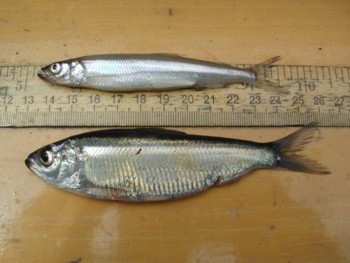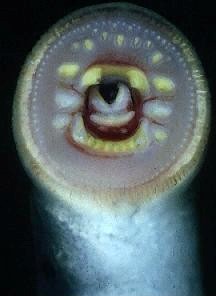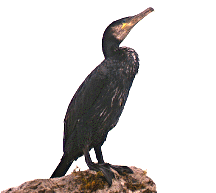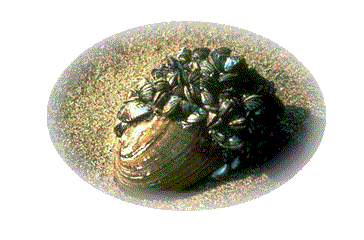LakeChamplainAngler.com |
Alewives
This invasive specie, a member of the herring family, will likely be the one that brings the most drastic change to Lake Champlain and its marine ecosystem. Alewives are already here in great numbers as of this writing (January 2008). Pan fish populations as we once knew them will be reduced. Hopes of realizing the goal of a spawning Atlantic salmon population in the lake will be crushed. Massive alewife die-offs will soon occur fouling our beaches and there will be a social outcry from property owners and stakeholders. Here are some links to other information regarding this depressing issue... | |||
 We attended this Lake Champlain Alewives Workshop in 2006 There's loads of information on alewives here! An early alewife press release from a few years back News from Burlington when alewives first arrived on the scene | |||
Lamprey This aggressive eel like fish has a tooth filled mouth and raspy tong, which eats a hole through the skin of its prey. The lamprey's saliva contains an anticoagulant keeping the wound open for long periods of time. Lightly scaled fish like pike, salmon and trout are especially vulnerable. Just like salmon, striped bass and alewives, sea lamprey are naturally ocean fish that spawn in fresh water tributaries. A few lamprey have forever inhabited Lake Ontario and the St. Lawrence River. The advent of the canals led to their colonization throughout the upper Great Lakes. Lake Champlain's lamprey population exploded in the 1980s bringing on an eight year experimental program by the US Fish and Wildlife Service to control the population by poisoning tributaries during peak spawning periods. Following this experimental program fishing improved. Unfortunately the Lake Champlain Fish and Wildlife Management Cooperative was not able to keep up with the lamprey populations in the lake. A number of public interest groups and so-called environmentalists stood in the way of thorough treatments using the channel darter and mud puppy as their poster children. The awkward permitting process in Vermont became a tool used by these groups to thwart the treatment process. Indeed, some officials of the Vermont Fish and Wildlife Service were less than enthusiastic about treating lamprey. By 2006 wounding rates had skyrocketed to 98 wounds per 100 fish in some fish species. Over the many years of this "cooperative" management strategy NYDEC spent hundreds of thousands of New York sportsmen's dollars to treat their tributaries while Vermont devoted little time, manpower or money to lamprey control on their side of the lake. Finally in the fall of 2007 NY officials made an ultimatum when Vermont once again came to the table with a halfhearted Poultney River treatment permit. In the early morning hours on the scheduled day of treatment, Vermont hammered out an acceptable permit for the treatment of the Poultney. Only time will tell if treatments are finally back on the right track in Lake Champlain.  This cooler should have fish in it! These 20 - 24 inch lamprey were just a few of the many that were clinging to the bottom of our boat in January, 2008 while fishing for salmon at Port Douglas. Two days of fishing and not one salmon. We used to catch between 10 and 20 fish per day in this area. Follow the recent progress of lamprey treatments on Lake Champlain. See how the cumbersome permitting process in Vermont and the less than enthusiastic efforts of some Vermont officials resulted in a failure in the so-called cooperative program between Vermont Fish and Wildlife and the New York DEC. Without the timely, thorough and comprehensive treatment of all of Lake Champlain's lamprey hosting tributaries we will never reach the targeted goal of acceptable lamprey management on this fishery! What management? We are in favor of the US Fish and Wildlife Service taking over lamprey control on Lake Champlain!! Large New Populations Of Lamprey Found In The Lamoille River An October, 2005 press release by Tom Mitchell, Rutland Herald writer Lamprey control as it progressed through 2006 and 2007 A 2006 article by the Lake Champlain Fish and Wildlife Resources Office with an update from Vermont Fish and Wildlife's, Brian Chipman on the status of Poultney River treatments for 2007 Burlington Free Press outdoors writer, Matt Crawford's blog regarding lamprey, Vermont permitting and issues leading up to 2007 treatments in the Poultney River This highlights several groups and individuals who oppose treatments | |||
Cormorants Cormorants... Year after year, these birds eat more perch than fishermen take! And that's just the tip of the Iceberg!! Zebra Mussels |  Zebra Mussels... Will Fish Become Significant Predators of Zebra Mussels in Lake Champlain? By Mary Watzin, Jamie Rowder, Beth Lancaster, Bob Acabbo, and Leman Bronson School of Natural Resources The University of Vermont |
